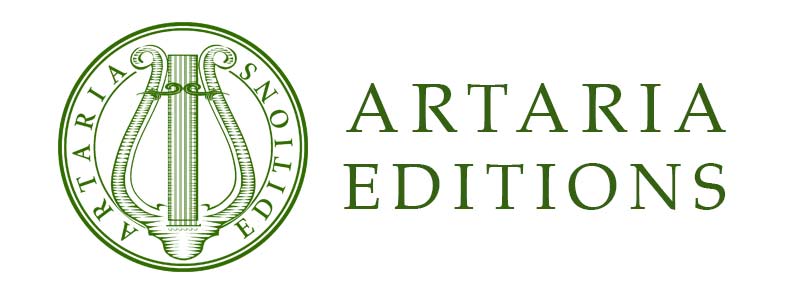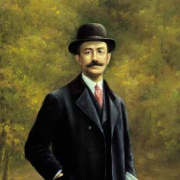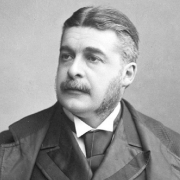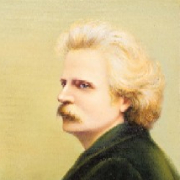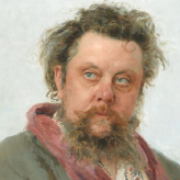From the Naxos Blog: A Frame of Gnomes
November 19, 2021
The nearest I’ve ever got to a gnome is by eyeing its dictionary definition:
In folklore, one of a species of diminutive beings, usually described as shriveled little old men, that inhabit the interior of the earth and act as guardians of its treasures; troll.
The plastic garden gnome subspecies doesn’t get a mention, not even in the extensive Naxos catalogue! But what does strike one leafing through the albums is the variety of musical interpretations composers have bestowed on those shriveled little old men. I’d like to share a few of those contrasting aural images with you.
We start with a short piece for solo piano by Edward MacDowell, who was born in 1860 in New York City. He went on to study in Paris and Germany, and gave his first concert appearance at the Frankfurt Hoch Conservatory in 1879, on the occasion of a visit by Franz Liszt. Liszt also heard him play in two concerts the following year; MacDowell dedicated his First Piano Concerto to him. In 1890 he composed his Twelve Etudes, Op. 39, prefacing each with a title, creating a Romantic mood, scene or image. No. 6 in the set is an impish miniature titled Dance of the Gnomes: Prestissimo con fuoco.
Composed some thirty years earlier, in 1862, Liszt’s own Gnomenreigen (Dance of the Gnomes) conjures a similar characterisation of the creature, but the technical demands of the piece call for a much greater variety of brushstrokes in a dazzling scherzo.
Spanish composer Manuel de Falla had a much daintier vision of the little fellows painted in his Cortejo de gnomos (Procession of Gnomes) which he wrote around the turn of the twentieth century, when he was in his twenties and studying at the Madrid Conservatory.
Time for a gnome sandwich now, by the English composer Sir Arthur Sullivan (1842–1900). In the late 19th century it was the policy of London’s Covent Garden to insert a ballet in any opera that didn’t have one, either using an existing work or commissioning a new one. This led to the young Sullivan’s ballet score titled L’Île Enchantée that it made its debut in May 1864 as the divertissement at the end of Bellini’s opera La sonnambula.
The story of the ballet is a slight one. A shipwrecked mariner is washed up on the shore of an enchanted island peopled only by gnomes and fairies. The fairy queen is so taken with him that she transports him to her magic bower, where most of the other fairies also fall in love with him. Here’s the section of the score marked “Storm — Entrance of the Gnomes — Entrance of the Fairy Queen”. Perhaps you might agree that, as with de Falla, Sullivan’s musical imagery sounds more twee than terrifying.
The next extract gets a bit edgier on the subject, as seen through a Biblical allusion. Gnomes is the second movement of Chinese composer Ge Gan-ru’s String Quartet No. 4, Angel Suite. The composer writes:
“Of all my works, this piece is the closest to the Western classical music tradition, and it offers a contrast to my other music. The title comes from my interest in Christianity, although I am not a Christian myself. For many years, the religion was forbidden in China. In this work, I try to express my curiosity in, and observation of, various aspects of Christianity. The titles of the movements refer to the subjects that I wanted to represent musically. For instance, in the first movement, the harmonic glissando represents a cherub; the second movement (Gnomes) focuses on a dance rhythm, which comes from the persistent bass notes on the cello. The opening motif on the violin gradually develops into a full dance.”
A similar sinister rhythmic insistence can be heard in Grieg’s short piano solo Tusselåt (Procession of Gnomes), written in 1898. Grieg’s encounter with Norwegian folk music and folklore, and his assimilation of its essential features, soon led to his writing being largely identified with that genre by many people, and still is today. His works helped establish a national identity and an international profile for Norwegian music. There can be few music lovers, for example, who wouldn’t instantly recognise Grieg’s In the Hall of the Mountain King. For now, however, here are his pesky gnomes.
We end with perhaps the most famous of all musical gnomes: Gnomus from Mussorgsky’s Pictures at an Exhibition. Originally written for piano solo, it was famously orchestrated by Maurice Ravel to make it a frequent inclusion in orchestral programmes. But there are numerous other orchestrations of the work, and I’m going to end with that prepared by Sergey Gorchakov (1905–1976), who keeps the colours dark but plays a relatively sober hand when compared with some of Ravel’s eerie embroidery. The whole set of ’pictures’ was inspired by paintings by Victor Hartmann, an architect, artist and friend of Mussorgsky. I’ll sign off with a description of Hartmann’s image: ‘A sketch showing a little gnome, clumsily running with crooked legs.’





























